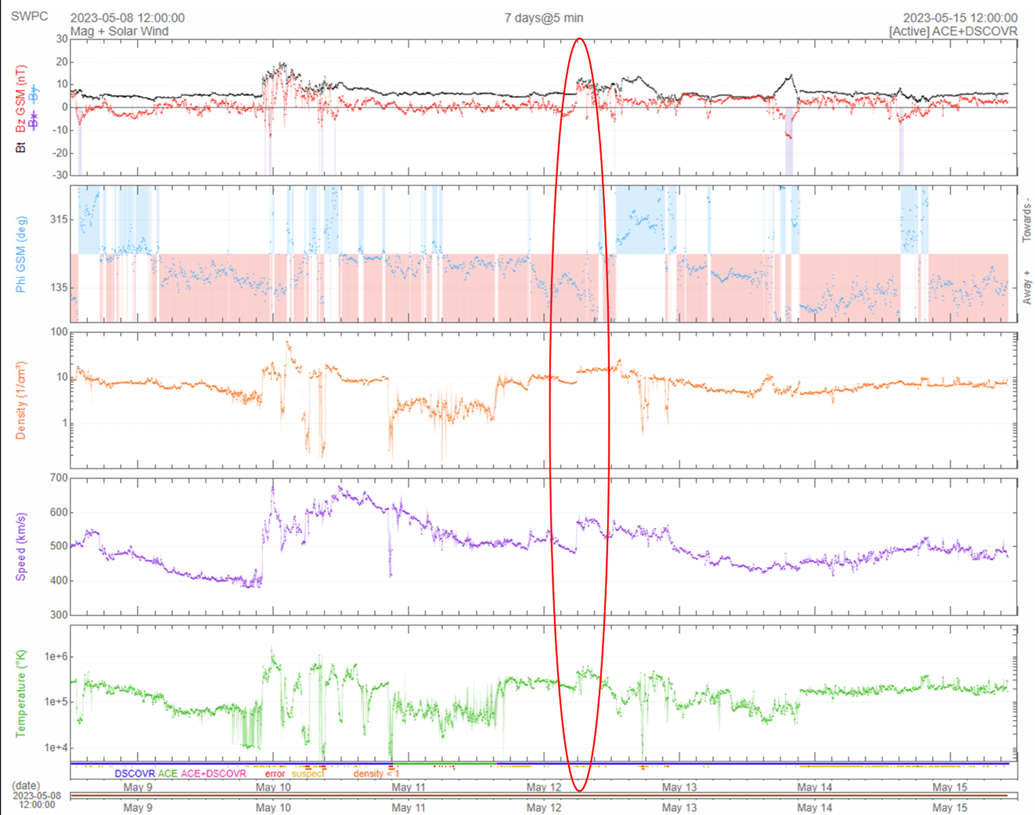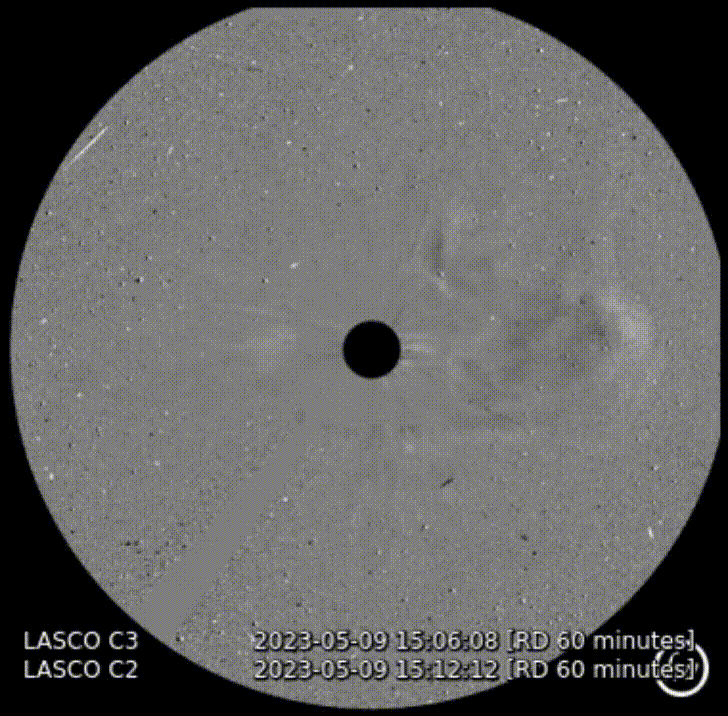Home
»
Data Services
»
Space Weather
»
Space Weather Alerts
»
Space Weather Alert Update 15th May 2023
Space Weather Alert Update - 15th May 2023
What Has Happened?
The Coronal Mass Ejection (CME) that lifted off the Sun on 9th May arrived at the Earth's magnetosphere at 6:30 UT on 12th May with activity reaching STORM G1 levels briefly on arrival. See NOAA space weather scales for more details about these storm levels.
Although solar wind speeds were elevated throughout the 12th, further activity was limited due to the interplanetary magnetic field (IMF) strength being relatively weak and orientated northwards, a configuration that limits increased geomagnetic activity.
Sign-up to receive Geomagnetic Disturbance Alert emails.
Follow us on Twitter:
Follow @BGSauroraAlert for more occasional aurora alerts.
Follow @BGSspaceWeather for daily space weather forecasts.
Glossary
- BGS
- The British Geological Survey is a geoscience research centre that is part of UK Research and Innovation (UKRI) and affiliated to the Natural Environment Research Council (NERC).
- CME or Coronal Mass Ejection
- The eruption of a portion of the outer atmosphere of the Sun into space, caused by rapid changes in its magnetic field. Often occurs along with a solar flare.
- Solar Wind
- The ever-present expansion of the Sun’s hot outer atmosphere into the solar system, which carries space weather within it.
- Interplanetary magnetic field (IMF)
- The magnetic field carried with the solar wind.

Models & Compass Variation
Space Weather
INTERMAGNET software


